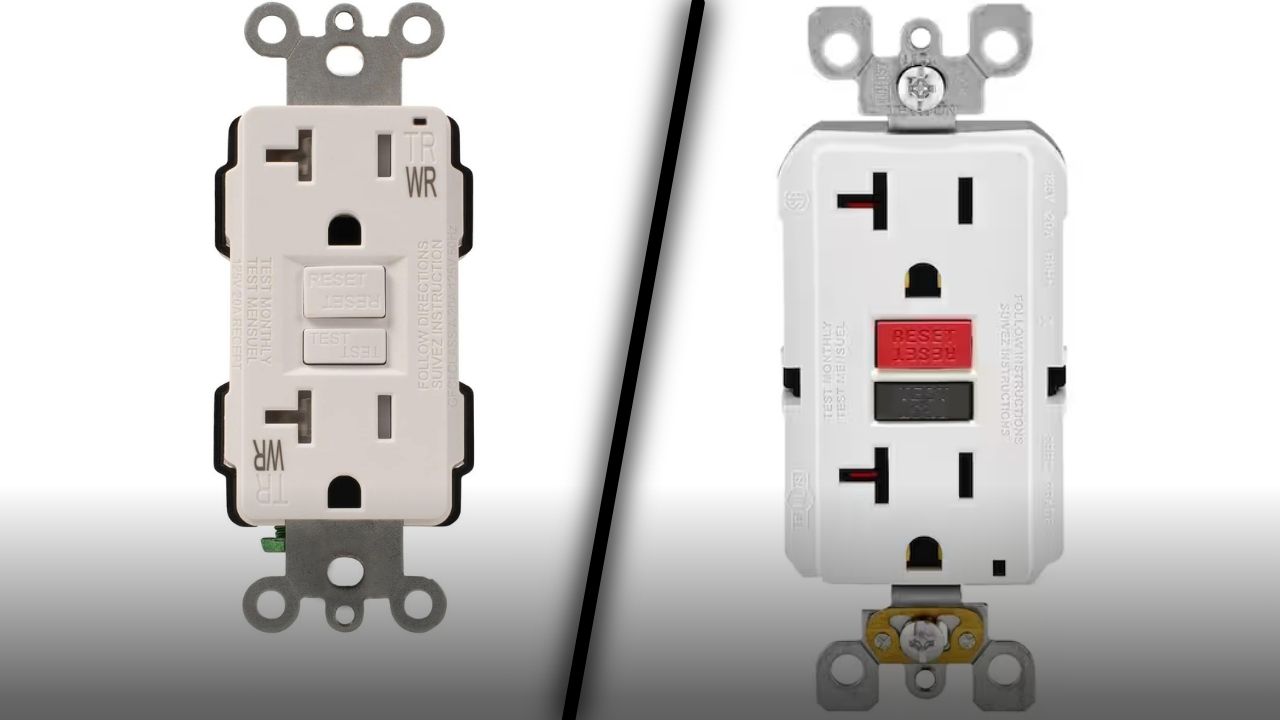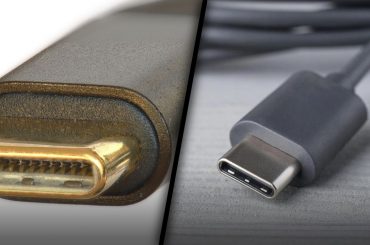You will encounter devices such as Ground Fault Circuit Interpreter (GFCI), Ground Fault Interpreter (GFI) when you attempt to install new outlets in your home (especially in the kitchen or bathroom). It is difficult for some electricians to understand the difference between these two terms, while others use them interchangeably. What is the difference between GFI and GFCI? ”. Throughout this guide, we will discuss GFIs and GFCIs in more detail. Also, we will compare GFIs with GFCIs and find out if there are any differences.
What is a Ground Fault?
First, you must understand what a ground fault is before you can understand ground fault interrupters (GFIs) and ground fault circuit interrupters (GFCIs). Beginners and novices can learn about Ground Fault with this simple explanation.
An everyday electrical appliance such as a lamp will help us understand Ground Fault. Power cords and lamps are plugged into outlets in the sequence below.
The lamp receives electricity from the hot slot of the outlet and enters the lamp through the hot terminal of its power cord. In the neutral wire of the lamp, the current returns to the source.
After passing through the neutral terminal of the power cord, the current is returned to the neutral slot of the outlet.
Lamps (or electrical appliances, for that matter) flow current normally in this direction. In the event that this path of electric current continues to be followed, the lamp will continue to glow.
You accidentally touched the exact spot on the Hot Wire because of a small cut. There is always a least resistance path for electric current.
Since this path offers the least resistance, the moment you touch an exposed hot wire, electric current starts flowing through your body and to the ground. Ground Fault is what this is.
Your body is shocked severely as a result. There is no overload on the circuit in this case, so the circuit breaker does not trip. Regardless of whether current returns through neutral or not, the circuit breaker doesn’t care. The only thing it cares about is whether the circuit draws more current than it is rated for.
What Causes Ground Faults? How Dangerous is it?
Wires will be exposed if they are cut through accidentally, chewed by rodents, or by any other means. Over time, the insulation can also come off old or worn-out wires.
There are also many reasons why ground faults occur, including water. You can cause ground faults in places like bathrooms, kitchens, washers, and dryers.
Electrical appliances can also have ground faults if there is a problem with the wiring or with the appliance itself.
It does not matter why ground faults occur, they are extremely dangerous and can result in serious electric shock. Electric currents up to 6mA can be safely handled by the human body, according to a study. There will be a shock, but no major damage will occur.
Electric shock will cause burns or, in the worst case scenario, could be fatal if the current due to ground faults is greater than this value. A ground fault can also cause a fire, in addition to electric shocks.
What are GFI and GFCI?
As we have seen a few examples of ground faults, let’s look at GFIs and GFCIs. Ground fault interrupters (GFIs) and ground fault circuit interrupters (GFCIs) are both used in electrical systems to detect ground faults.
We are protected from ground faults when we use a GFI receptacle. In bathrooms and kitchens, GFI receptacles with buttons for testing and resetting are common.
A GFCI does the same thing, but rather than protecting a single outlet as with a GFI, it protects an entire circuit from ground faults. Circuit breakers with ground fault protection are essentially ground fault circuit breakers.
A GFI receptacle is essentially a 2 outlet receptacle, while a GFCI circuit breaker is basically a 2 outlet circuit breaker. GFCIs can protect receptacles as well as circuit breakers, but we often use the same name.
GFCI Receptacles and GFI Receptacles mean the same thing. We need to install the GFCI Breaker at the distribution panel or service panel, however, which is different from a standard circuit breaker.
There is only one GFI protecting both receptacles from ground faults. However, GFCI Breakers have the advantage of acting as overcurrent protection devices (tripping when current exceeds their rated value) as well as ground fault protection devices.
How Does GFI or GFCI Work?
As we discussed above, both GFIs and GFCIs protect against ground faults. There are two types of protection devices: a local device (GFI) and a circuit-wide device (GFCI).
Additionally, their working methods are similar. A hot wire is measured, and a neutral wire is measured, essentially. GFIs/GFCIs automatically open circuits (or outlets) if there is an imbalance of even 5mA.
Devices such as GFIs and GFCIs utilize a complex circuitry in order to measure and compare hot and neutral currents. However, there is one very simple explanation.
Wires passing through a toroidal ring are electrically neutral and hot. One of these wires acts as a primary side of the transformer, and the other side is the secondary side, which gets its power from a special coil. Transformers have toroidal rings as their cores.
These wires pass an equal and opposite current under normal operating conditions. Hot and neutral wires generate different voltages, which cancel each other out. Due to this, the secondary coil (pickup coil) will not be induced with voltage.
The current leaving the hot wire differs from the current returning through the neutral wire when there is a ground fault. It appears that some amount of current finds an alternative path to ground (either through humans or through any other means).
In response to this difference in currents, a voltage is induced on the secondary side because of the net voltage generated on the primary side. To open the circuit, a solenoid is activated by boosting the voltage on the pick-up coil.
GFIs and GFCIs have excellent reaction times. A ground fault is detected and the circuit (or outlet) is automatically opened within 25 milliseconds.
It is the length of their protection that distinguishes GFIs from GFCIs. In addition to providing ground faults for two outlets, a GFI (also called GFCI receptacle) can also provide ground faults for one or two other outlets.
It provides protection against overload and ground faults for the entire circuit with its GFCI (GFCI Circuit Breaker).
Differences: GFI vs GFCI
GFIs and GFCIs are both ground fault protection devices, as we have seen above. Can they be distinguished from one another? For a better understanding of the subtle differences between GFI and GFCI, let’s make a simple comparison.
To understand what GFCI Circuit Breakers are and what GFI is, you must first understand what GFI is often called GFCI. Another type of GFCI is the Portable GFCI, which is different from the two above.
An extension cord, such as this one, can be used to convert an outdoor outlet to a GFCI outlet.
1. Protection
Ground fault protection devices, such as GFIs and GFCIs, serve the same purpose. As soon as a ground fault is detected, the outlet or breaker is tripped.
Having two outlets, the GFI can protect against ground faults since it is a receptacle. Other outlets can also be protected against ground faults with some wiring tactics.
Ground fault circuit interrupter (GFCI) breakers are basically circuit breakers which are designed to protect against ground faults. As a result, it contains both overcurrent and short circuit protection, which are typical of circuit breakers.
A GFCI Breaker also protects each circuit from ground faults in addition to these features. Therefore, that circuit has ground fault protection on all outlets (normal or GFCI).
2. Installation
Hopefully, you already know where to install GFIs and GFCIs. GFIs are receptacles. As a result, you can install them wherever outlets are needed. Electric shocks are more likely to occur at certain locations where GFCI outlets are required by the NEC.
Bathrooms, kitchens, laundry rooms, basements, crawl spaces, fountains, etc., are some common places to find them.
Circuit breakers are GFCI breakers. Therefore, they must be installed in service panels. In addition to protecting all devices, appliances, and outlets, GFCI Breakers are recommended.
3. Testing
Manual testing is available for both GFIs and GFCIs. GFI Receptacles come with two buttons marked TEST and RESET positioned between the two outlets. A ground fault error is created in a GFI when you press the TEST button.
In the event the devices are working properly, the outlet should trip and the power should be turned off immediately. To restore normal operation, press the RESET button.
There is usually an LED indicator on most GFCI Receptacles nowadays. LEDs are generally configured in the following way; if they are green, the GFI is functioning properly. In the event that we push the test button or if our ground fault is detected, the LED will turn off.
It is necessary to pay attention to the GFI if the red LED is on or blinking. If the problem persists, you might be able to fix it by performing a TEST and RESET. The device needs to be replaced if not.
Similar testing features are also available on GFCI breakers. It is common for GFCI breakers to have a TEST button. The ground fault will be created when you press this and the breaker will trip.
As with regular circuit breakers, you can reset the GFCI breaker by toggling the lever. Test GFCI Circuit Breakers with a great deal of caution, as you must access the main service panel.
GFI and GFCI should be tested on a monthly basis, according to many experts. The device can be immediately replaced if a fault is found during these tests.
4. Cost
Receptacles with GFIs come in 120V 15A and 12V 20A versions. The two above are the most popular and common configurations. You will need to spend $15 to $20 for the 120V 15A GFCI Receptacle.
A GFCI Circuit Breaker is available in 120V 15A and 120V 20A variants, as with GFI Receptacles. In the range of $50 to $55, 120V 15A GFCI Circuit Breakers are available.
Conclusion
A ground fault circuit interrupter (GFCI) is an important device for protecting the electrical system. Electric shocks and burns can be prevented by detecting ground faults and opening the circuit. It is possible to find GFCI devices as either receptacles or circuit breakers when shopping for GFCI devices.
A Ground Fault Interrupter or GFI refers to a receptacle-style device while a Ground Fault Circuit Interrupter refers to a circuit breaker.
Electrical vendors and electricians confuse these terms and use GFCI for both circuit breakers and receptacles.
Through comparing GFI versus GFCI, we learned what GFI is and how it differs from GFCI.
Our goal is to provide you with a basic understanding of GFI and GFCI devices in this guide. Feel free to comment if there is anything we missed or you would like us to add. As well as helping us, other readers will benefit from it as well.





